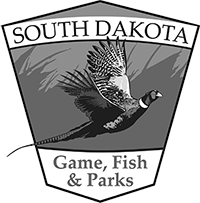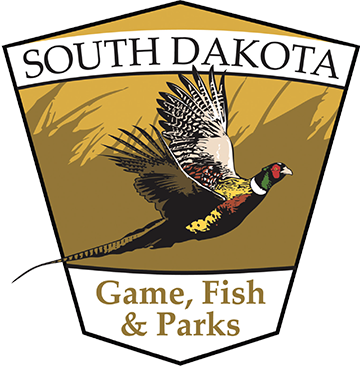Wildlife Action Plan
Game, Fish and Parks (GFP) is reviewing and revising the 2015 South Dakota Wildlife Action Plan for submission to the U.S. Fish and Wildlife Service (FWS) during the fall of 2025. GFP has drafted the South Dakota Wildlife Action Plan 2025 Revision and welcomes input on this document. See Related News item below for details about the comment period.
What is the South Dakota Wildlife Action Plan? The South Dakota Wildlife Action Plan assesses the health of South Dakota's fish and wildlife and associated habitats, evaluates the problems they face, and outlines actions to help conserve them for the long term.
The plan encourages voluntary partnerships among governmental entities, tribes, organizations, and private citizens to help prevent fish and wildlife from becoming endangered and to provide for the needs of the full array of fish and wildlife and habitat diversity for the future sustained enjoyment and use by South Dakota's residents and visitors.
What is considered when writing or revising a state Wildlife Action Plan? States have flexibility in how they develop their plans, but the FWS reviews each plan for compliance with required elements. The elements include identifying fish and wildlife species that represent the state's wildlife diversity (typically called species of greatest conservation need, or SGCN), describing key habitat types, identifying conservation challenges and actions, developing species and habitat monitoring plans, and coordinating with other agencies, tribes, and the public.
When was South Dakota’s plan last revised? The current South Dakota Wildlife Action Plan was approved by the FWS in May 2015. Plans must be revised at least every ten years. South Dakota's plan is a strategic framework for agencies, partners, and the public to work together for the long-term benefit of fish and wildlife and their habitats, with an emphasis on rare species that have not received adequate attention or funding in the past.
How has the South Dakota’s Wildlife Action Plan benefited fish and wildlife in the state? Each state and territory must have an approved wildlife action plan to be eligible to receive annual funding called State Wildlife Grants. Each wildlife action plan must contain a list often called species of greatest conservation need, although not all species may be rare. The species list should represent other species and their habitats. By monitoring these species, a state can assess how effective they are in implementing the wildlife action plan. By remaining eligible to receive State Wildlife Grant funding, GFP and its partners have received $12.8 million in total federal match and have completed more than 100 individual projects. You can learn more about State Wildlife Grant projects on the Wildlife Action Plan Explorer website.
How were South Dakota’s species of greatest conservation need selected? GFP developed criteria for selecting species with the original plan more than 20 years ago. Criteria have been refined to their current form. They include state or federal threatened or endangered species, species for which South Dakota represents an important portion of the species’ range, or species that have characteristics or needs that make them vulnerable. GFP staff and some known experts in various animal and plant groups drafted a revised species list that GFP would like additional input about from members of the public, tribal agencies, other government agencies and conservation and land management partners.
What is the current list of draft species of greatest conservation need? Current SGCN List
What are the criteria used to describe South Dakota’s species of greatest conservation need list?
1 = State or federally listed species for which the state has a mandate for recovery (listed as threatened or endangered);
2a = Species that are regionally or globally imperiled and for which South Dakota represents an important portion of their remaining range;
2b = Species that are regionally or globally secure and for which South Dakota represents an important portion of their remaining range; or
3a – 3 h = Species with characteristics that make them vulnerable, including any of the following:
- 3a are indicative of or depend on a unique or declining habitat or resource in South Dakota;
- 3b require large home ranges/use multiple habitats;
- 3c depend on large habitat patch sizes;
- 3d depend on an ecological process (such as fire) that no longer operates within the historical range of variation;
- 3e are limited in their ability to recover on their own due to low dispersal ability or low reproductive rates;
- 3f have a highly localized or restricted distribution (endemics);
- 3g concentrate their populations during some time of the year; or
- 3h have significant information or data needs.
View the South Dakota Wildlife Action Plan Explorer, an interactive website for our Wildlife Action Plan and related projects.
The South Dakota Wildlife Action Plan assesses the health of South Dakota's fish and wildlife and associated habitats, evaluates the problems they face, and outlines actions to help conserve them for the long term. This plan encourages voluntary partnerships among governmental entities, tribes, organizations, and private citizens to help prevent fish and wildlife from becoming endangered and to provide for the needs of the full array of fish and wildlife and habitat diversity for the future sustained enjoyment and use by South Dakota's residents and visitors.
A federal match source called State Wildlife Grants has been helping South Dakota provide for the needs of all fish and wildlife species since 2000. The broad goals of this funding program are to help prevent future endangered species listings while also keeping common species common. In return for this federal funding match, each state prepared a plan to show how they would assure that the needs of all fish and wildlife species and their habitats should be supported. By planning ahead, we hope to reduce regulatory conflicts regarding rare species by gathering information in a systematic and proactive way. A plan that addresses habitats also helps assure that the needs of more common species are met and that species currently under the radar are accommodated.
States have flexibility in how they develop their plans, but the U.S. Fish and Wildlife Service reviews each plan for compliance with required elements. These elements include identifying fish and wildlife species that represent the state's wildlife diversity, describing key habitat types, identifying conservation challenges and actions, developing species and habitat monitoring plans, and coordinating with other agencies, tribes and the public.
South Dakota's revised Wildlife Action Plan was approved by the U.S. Fish and Wildlife Service in May 2015. The revision allowed SDGFP to use the results of State Wildlife Grants projects, many of which deal with inventories of rare species and unique habitats and incorporate new information on conservation challenges. South Dakota's plan is not a SDGFP plan, but instead a strategic framework for agencies, partners, and the public to work together for the long-term benefit of fish and wildlife and their habitats.
The entire South Dakota Wildlife Action Plan is provided below. Due to the plan's large size, sections have been broken into multiple files for faster downloading. The 7-page Executive Summary offers a brief look at the approaches taken in the plan and newly incorporated conservation challenges, without the extensive tables, maps, and other data provided in the complete 583-page plan.
- Executive Summary
- Introductory Materials
- Chapter 1: Introduction
- Chapter 2: Species of Greatest Conservation Need
- Chapter 3: Native Ecosystem Diversity and Terrestrial and Riparian-Wetland Ecosystems
- Chapter 4: Aquatic Systems
- Chapter 5: Conservation Challenges
- Chapter 6: Conservation Actions
- Chapter 7: Agency Coordination, Cooperator Interactions, and Public Involvement
- Chapter 8: Monitoring and Inventory, Research, and Adaptive Management
- Chapter 9: Review Schedule and General Framework
- References Cited
- Appendices

